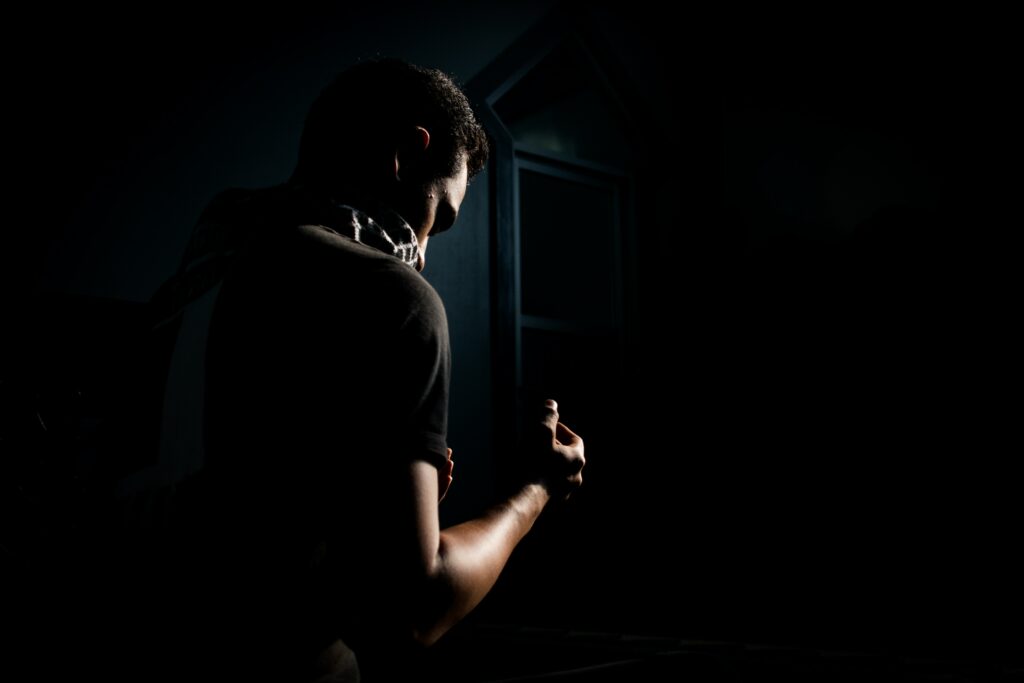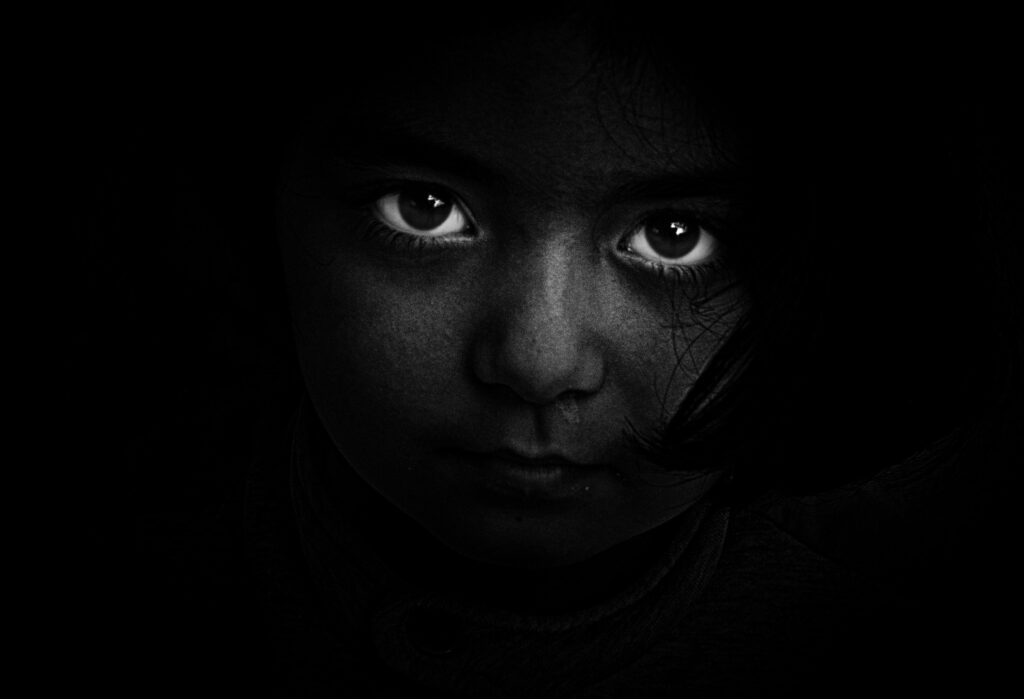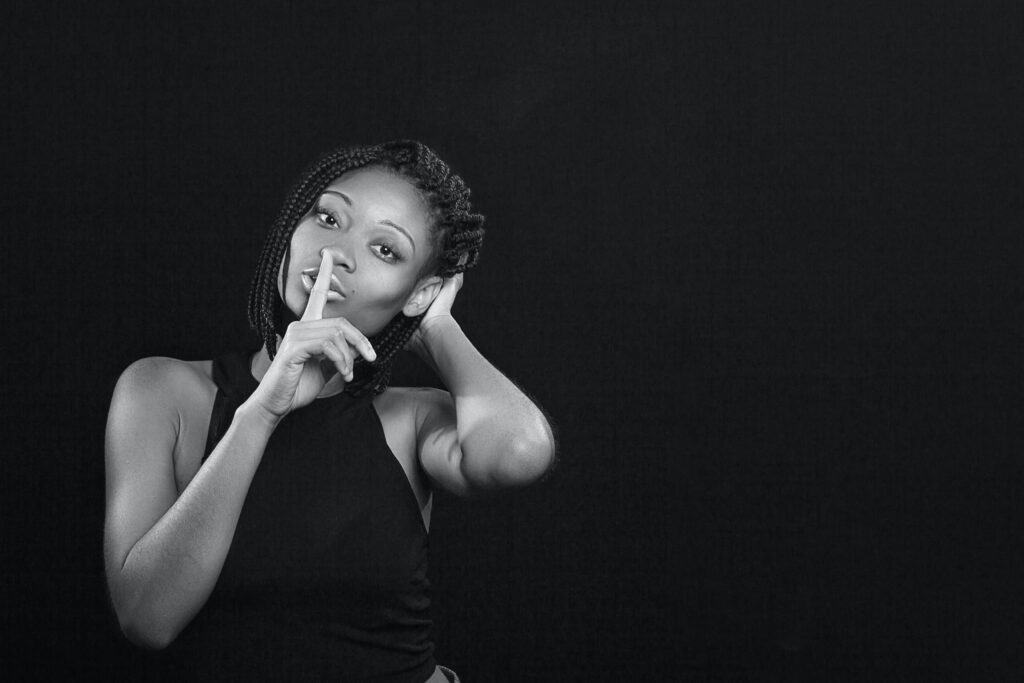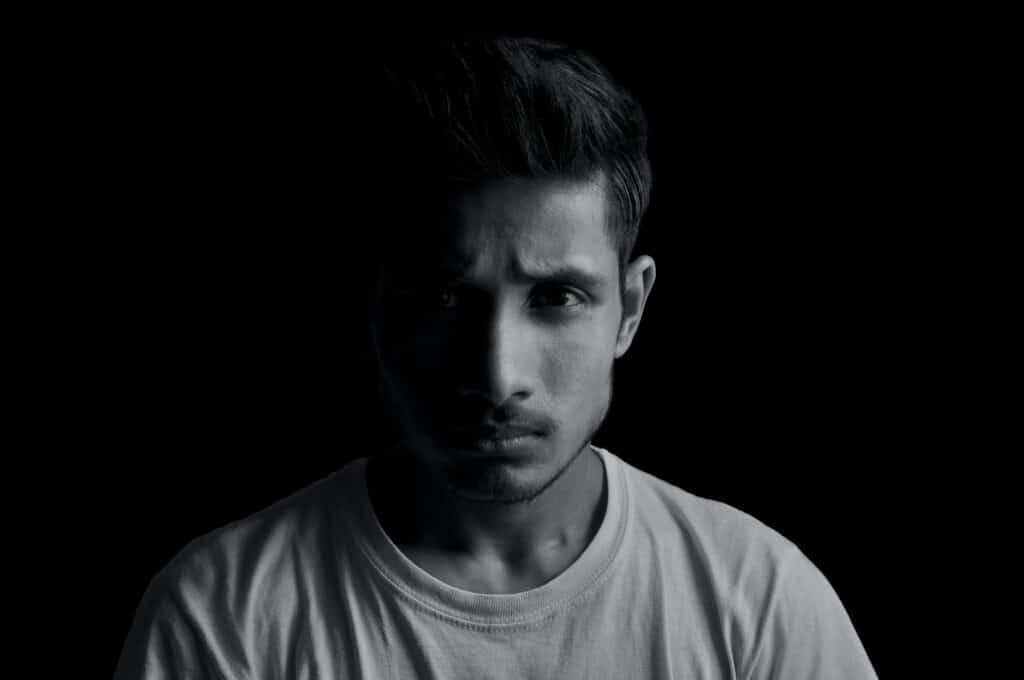Low key photography is a term commonly heard in the studio world. Low key photography refers to images in which there are predominantly dark tones and colors. You’ve seen low key photography in images in which the background is all black and the subject is emerging from the darkness. Low key photography creates contrast through reduced lighting (hence the ‘low’ part of the name).
This type of photography can be quite challenging even for the professional photographer. Low key photography is intended to express something dark, moody, and emotive in aesthetic. You don’t need very much for low key photography, just the right lighting primarily! Here is our guide to low key photography.
The Aesthetic of Low Key Photography
Low-key is usually dramatic and full of mystery. Photographers use this type of lighting to capture sensual, emotional, and impressive images that the average person may not be able to create.
Low key photography always requires a dark background, because the point of this type of capture is to express shape and contrast through taking lighting away (and keeping it only on the important parts of your subject).
You can see some examples of successful low key photography here:




What Do You Need for Low Key Photography?
Capturing low key photography doesn’t require an extensive amount of equipment. All you need is a camera, lens, and one light source. If you want to get fancy, you can add a tripod and a black or dark colored studio backdrop, but that isn’t a requirement.
Camera
For the camera, ideally you would want to have a full frame sensor. That is because low key photography deals so much with darkness that a crop sensor camera won’t be able to capture the available light as well. Full frame sensors take in a lot of light, so you can shoot at lower ISO levels because noise is also reduced due to the sensor size.
Full frame models also tend to have significantly higher megapixel counts than the crop sensors. Megapixels are a unit of measurement for resolution that literally translate to “one million pixels”. Megapixels dictate how much detail your sensor can capture. The larger the megapixel number, the more detail your camera can catch. Only full frame sensor cameras have large megapixel counts.
Lens
As for the lens, because a full frame sensor camera is the way to go, look for full frame lenses as well. For low key photography, the only real requirement is having a shallow depth of field lens, or one with a wide aperture. An aperture of a minimum of F/2.8 is great, with F/1.8 or so being ideal.
The aperture lets in a lot of light when it is at its widest point, which is why wide apertures are preferred. You have to remember that you are primarily working with lower light, so you want to maximize the light available.
Fixed focal length lenses tend to have such wide apertures. Fixed focal length lenses are those that do not zoom. The benefits of fixed lenses are their overall sharpness, quality, and wide apertures. Because prime lenses do not zoom, their barrels aren’t over encumbered with zooming mechanisms. Generally speaking, variable focal lengths can only hold an aperture at a width of 2.8 at its widest, while fixed focal lengths can go down as low as f/0.95!
Lighting
The easy part of low key lighting is the fact that it relies on only a single lightsource. If you are shooting in available light, look for locations that have just a spotlight effect and everything else is dark. But if you’re capturing low key lighting at any time of the day or night, you’ll need a single studio light.
The ideal shape for the lighting is an octagon softbox. You can then attach either a flash, strobe, or speedlite to it or you can attach a giant light bulb and have continuous light.
The only rule you should follow when shooting low key photographs is to never allow light to reach your background. You also want to try to avoid casting dark shadows on the face of the subject. Even though low key portraiture is dramatic, it should still be flattering.
Tripod and Backdrop
If you’re able to shoot in a studio, or recreate a studio look, you’re going to likely want a dark colored backdrop. Look for black, charcoal, or gray backdrops. These backdrops can either be paper or fabric, and are often attached to a backdrop stand.
If you want to place the camera on a tripod to allow for slower shutter speeds, feel welcome to!
Low Key Photography Settings
The real key is to keep the exposure proper on the highlights and ensuring the shadows keep their darkness. That being said, you typically do not want noise in your shot, so try to keep your ISO as low as possible. This should be helped by keeping your aperture at its widest point, and then the shutter speed will fall into place wherever it falls.
Just for a quick refresher on how these three variables work with exposure…
The ISO is your camera’s sensitivity to light. The lower the ISO number, the less sensitive the camera is to light (but the less noise the photograph has). The higher the ISO number, the more sensitive the camera is to light (but the more noise the photograph has).
The aperture controls how much light reaches your sensor. The lower the aperture number, the more light the camera lets in. The higher the aperture number, the less light the camera lets in.
The shutter speed is how fast your camera takes the photograph. The higher the shutter speed number, the more frozen the action will be but the photograph will be darker. The lower the shutter speed number, the more motion blur your photograph will have but the photograph will be lighter. Since this is a still image (most likely) you have more leeway here.
For ease on setting the above three variables for exposure, set your Metering Mode to Highlight Weighted Metering. Metering Modes help us tell the camera’s sensor what we want our exposure adjusted for, which we can read via the exposure meter (sometimes referred to as the light meter). Highlight Weighted Metering looks at the entire image when considering exposure, but focuses its consideration on the highlights of your image rather than the shadows and midtones. Since the highlights are all we need well exposed, this keeps our shadows dark and the highlights with detail.
Low Key Photography Lighting Position (Studio Light)
The last piece of the puzzle is the lighting. The Butterfly lighting tends to be one of the most popular choices. Butterfly lighting is when there is one light source directly in front of the subject pointed down towards the subject.

If you take this lighting and move it to the side of the subject, you can get a moody split look too, very reminiscent of low key lighting!
In conclusion, for your moodiest stories, try low key lighting to express the idea!

